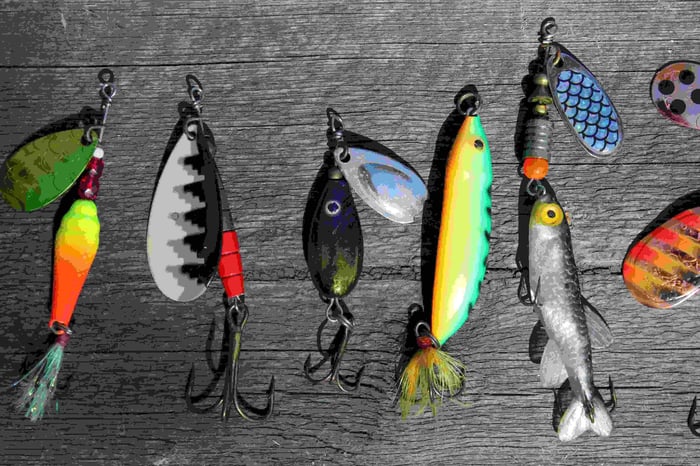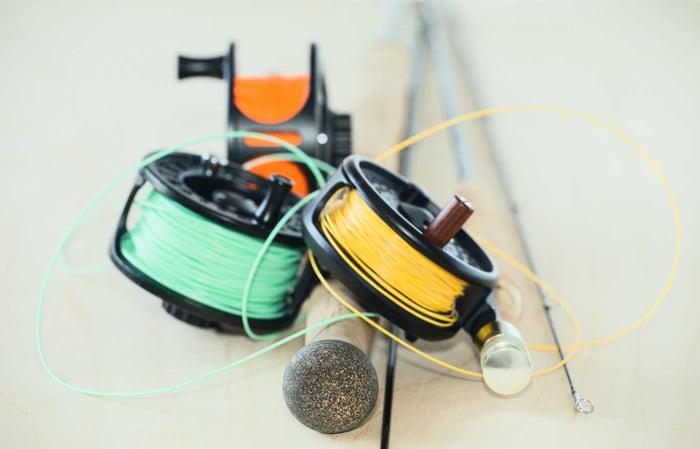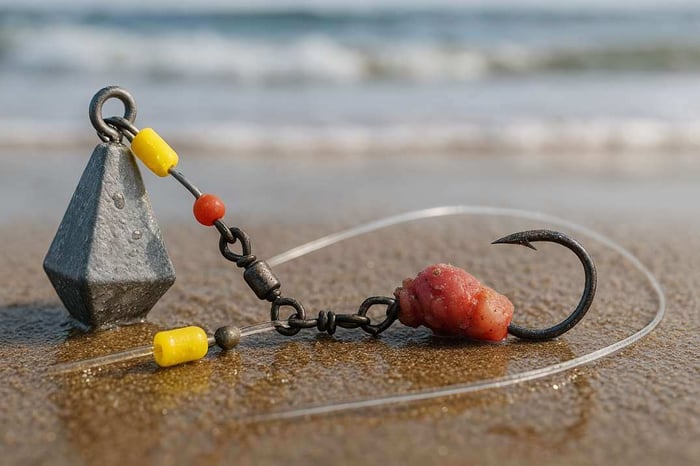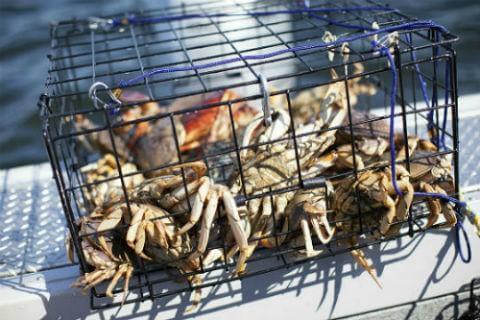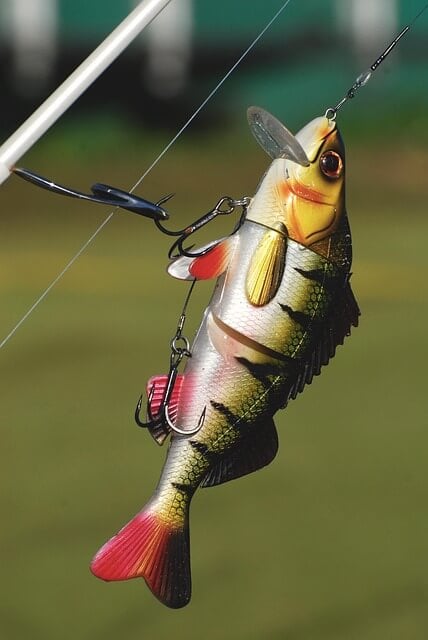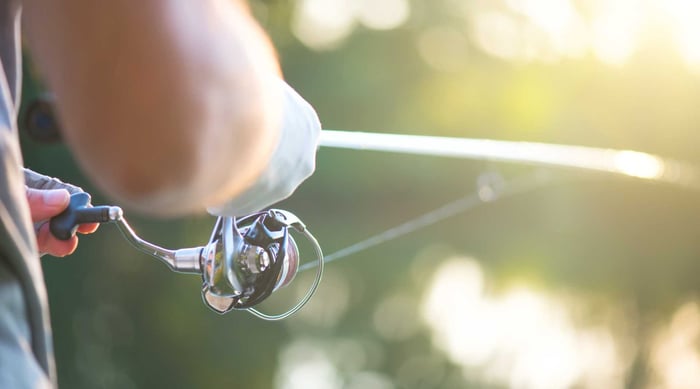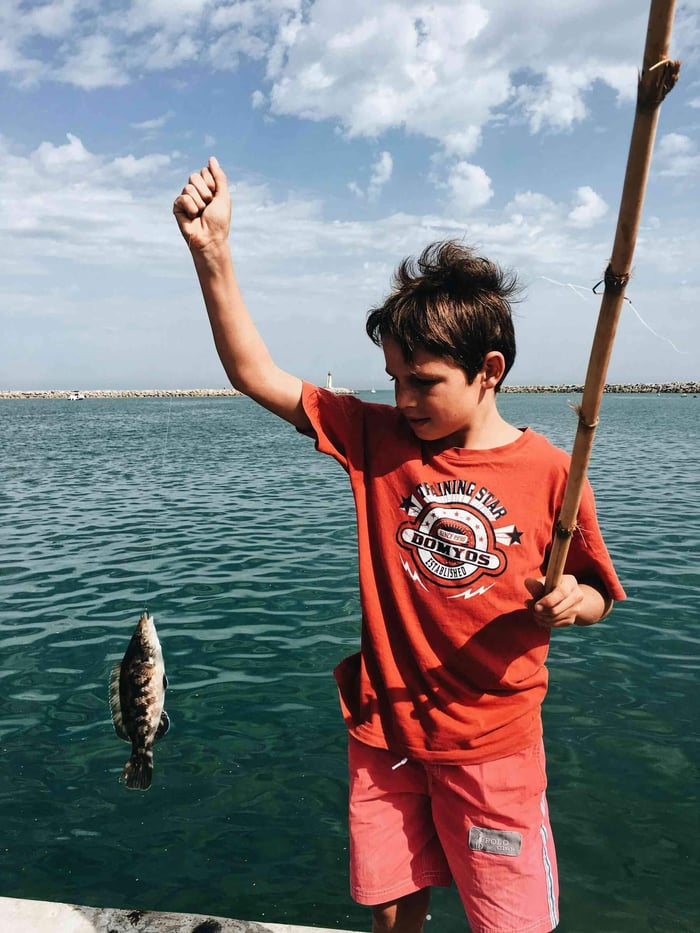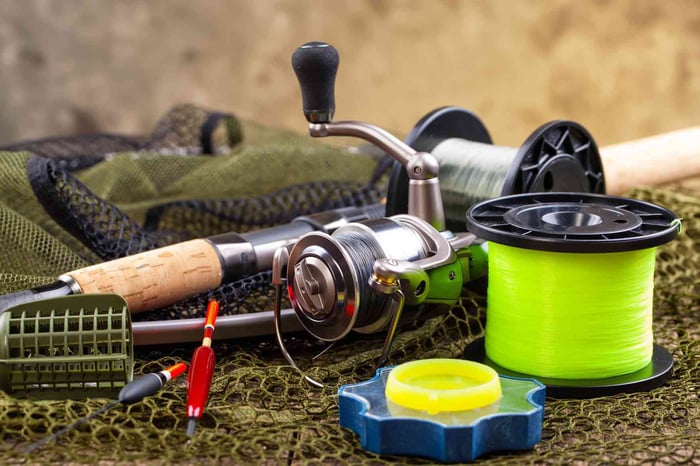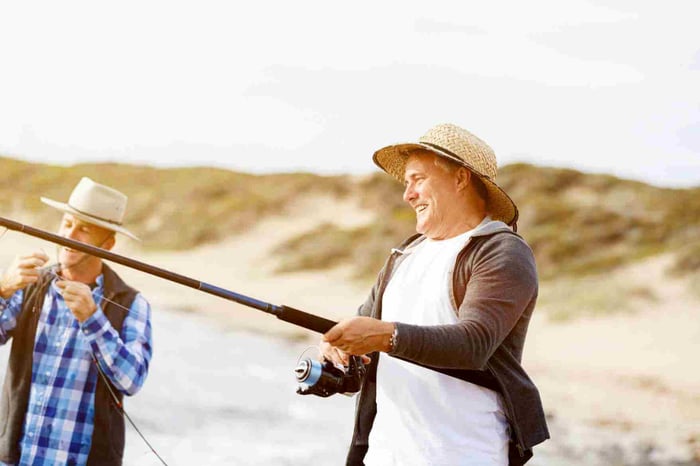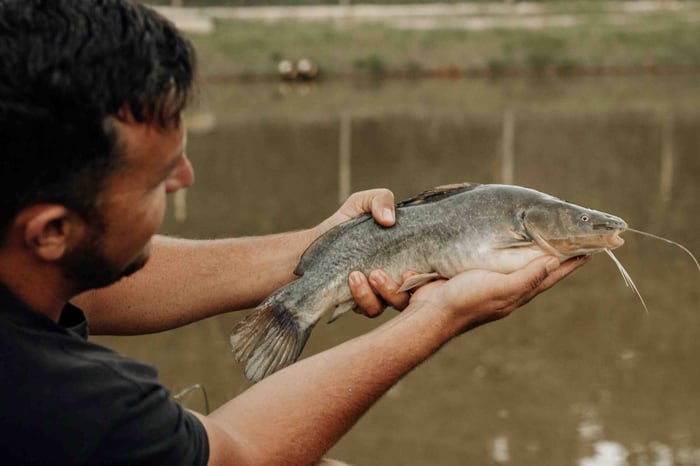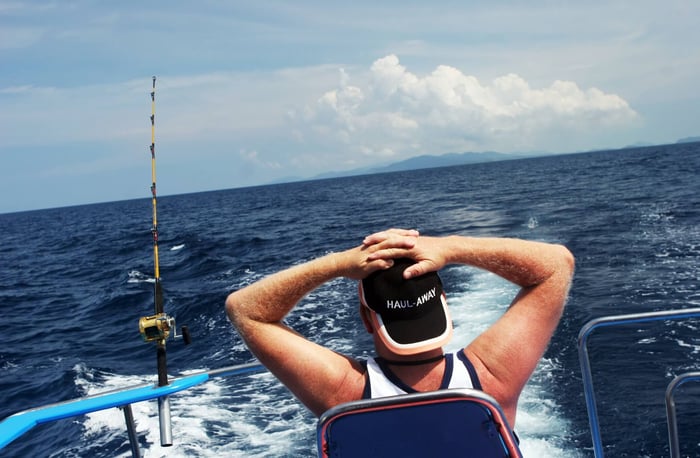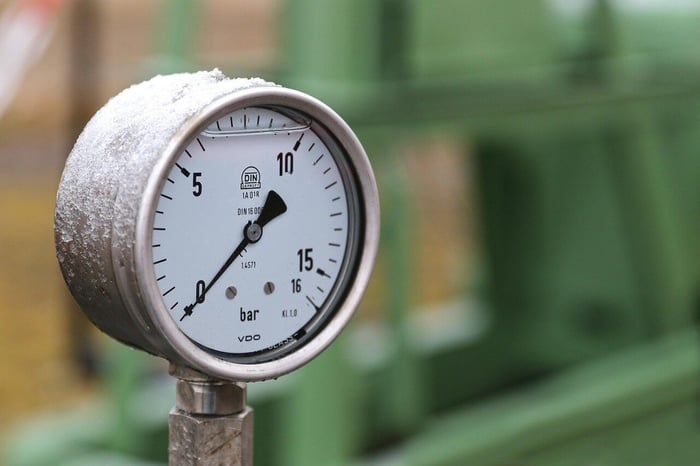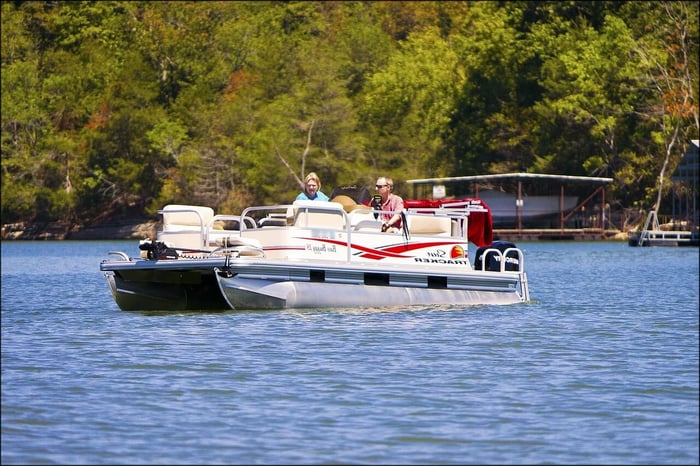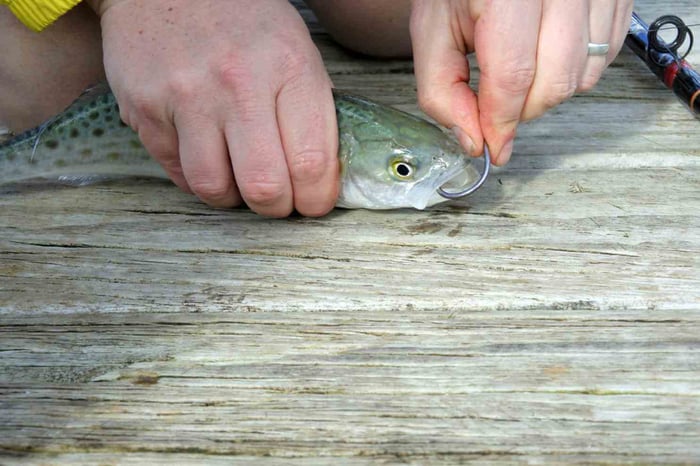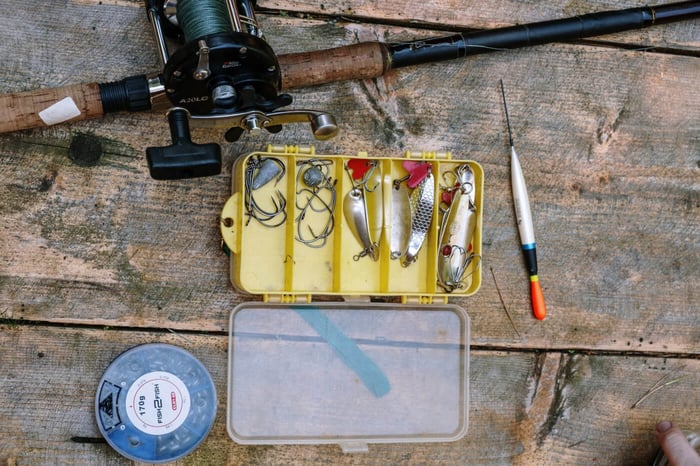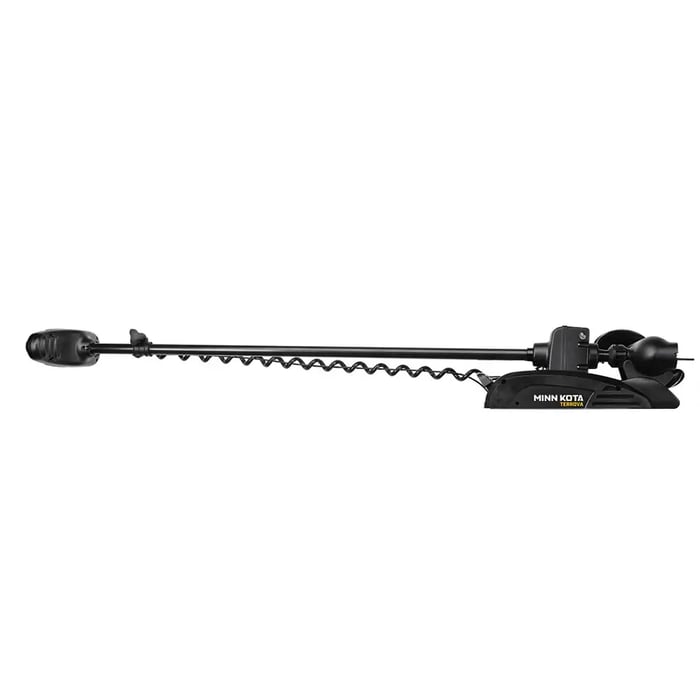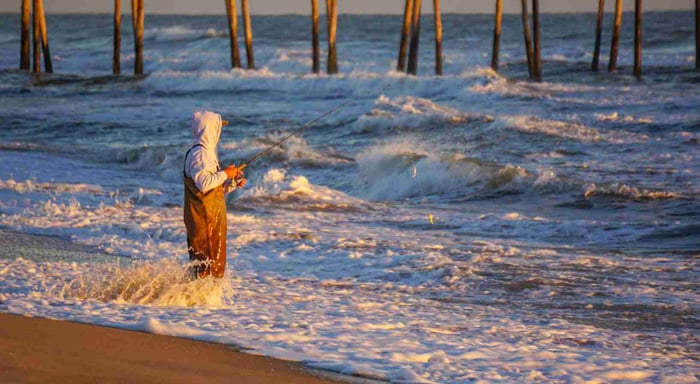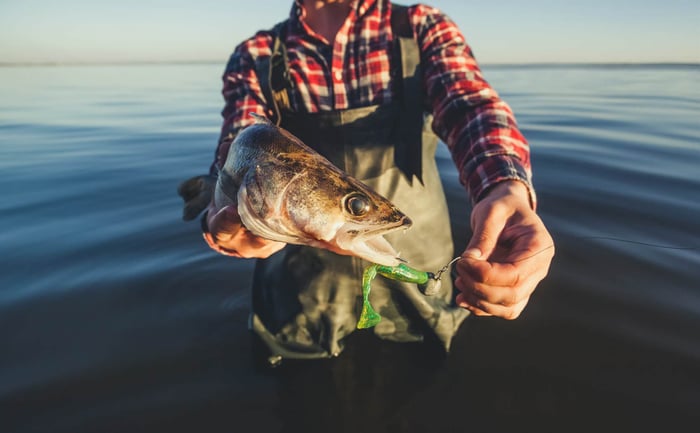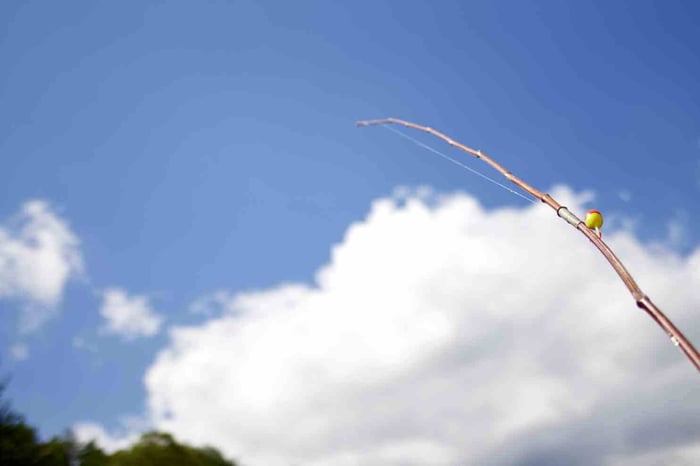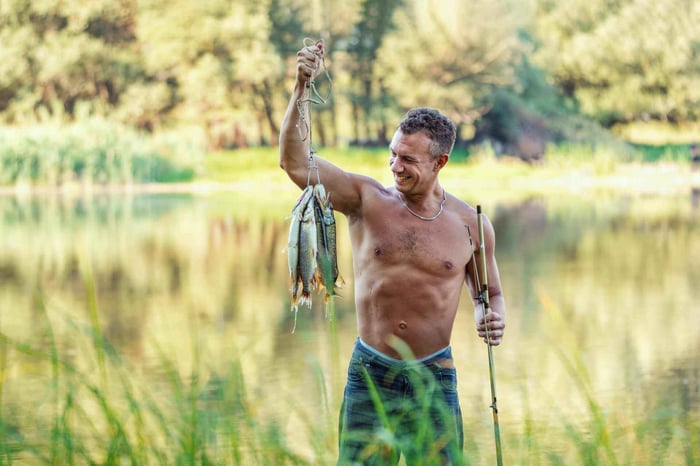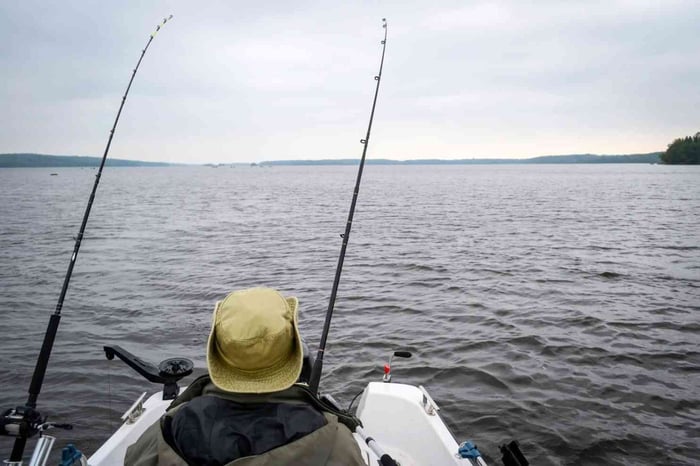Table of Contents
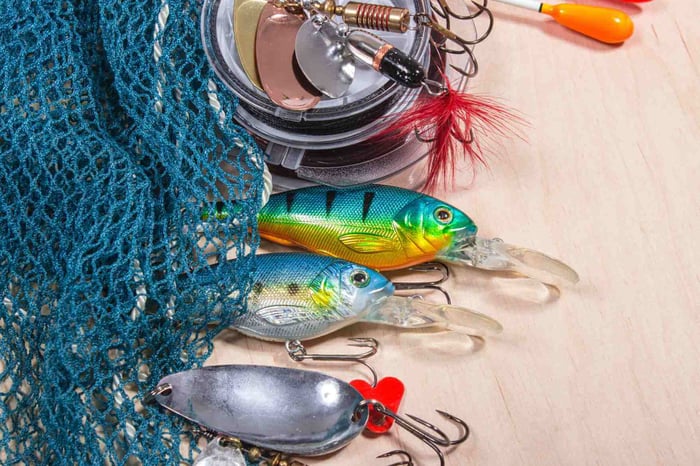
Spinnerbaits are one of those baits that never go out of an angler's tackle box. Ideally, that is.
They are easy. But they can outcatch nearly anything if the conditions are right.
A lot of anglers grab a spinnerbait when the bite gets slow. A lot of anglers use it when they need to cover a lot of water quickly. The reality is, spinnerbaits just work. It just does!
What makes them unique is how they move within the water. The blades emit a flash that resembles baitfish. The vibration causes fish to strike even when there is poor visibility.
The skirt pulses and flares with each reel turn.
And guess what? If you combine all that, and you have a lure that appeals to both sound and sight, you'd be practically a champion. It is NOT easy at all for other lures to compete with that combination.
The best part of spinnerbaits is how adaptable they are.
You can make them shallow or deep cast. You can slow roll them along the bottom or burn them within an inch of the surface.
They're available in sizes, colors, and blades.
This will allow you to adapt to water clarity, time of year, or the mood of the fish with a few minor adjustments.
In this article, we will discuss how to master the spinnerbait. You will discover when to use it best. You will observe how to retrieve it properly. We will give tips on gear, setup, and mistakes to watch out for.
By the end of it, you will be able to use a spinnerbait with confidence and hopefully catch more fish in your next adventure.
The Basics
A spinnerbait is made for doing one thing. That is, obviously, catching fish.
All the components are functional, and understanding the setup is key to using it effectively.
✓ The wire arm holds one or two blades.
✓ The head holds the lure in place. It's a controlled "dropping" rate, so you can adjust the water column. You know, have fun a little.
✓ Skirts flare to mimic baitfish. It's those silicone or rubber strands.
✓ A trailer jig or swimbait will give it weight and tempt the big fish to commit. Some anglers add this to catch short-striking fish.
Types of Blades:
A silver blade has a spinning motion near and mimics a shad in clear water.
A gold blade creates a warm flash that calls bass in shallow water.
Also, blade size changes vibration and how the bait moves.
Longer blades push more water and cause largemouth bass blows.
Short blades churn tighter and faster when small fish chase small prey.
Honestly, what makes a spinnerbait really different is its response.
I mean, you can literally drop it in brush stacks, grass beds, or boulders. The arm makes it roll over stuff that other lures will catch.
You can cast off the boat or offshore and have the rod tip high or low based on depth.
Just make sure to hold on to a spinnerbait when the fish are moving, okay? If you must cover water rapidly but have to have something in front of your face, this is the tool.
In fact, MOST anglers use it as a search lure before slowing down with soft plastic.
Once you master using a spinnerbait with the right line and rod, you will know why it has been a classic for so many decades. It's a must-have for all anglers!
When to Throw a Spinnerbait
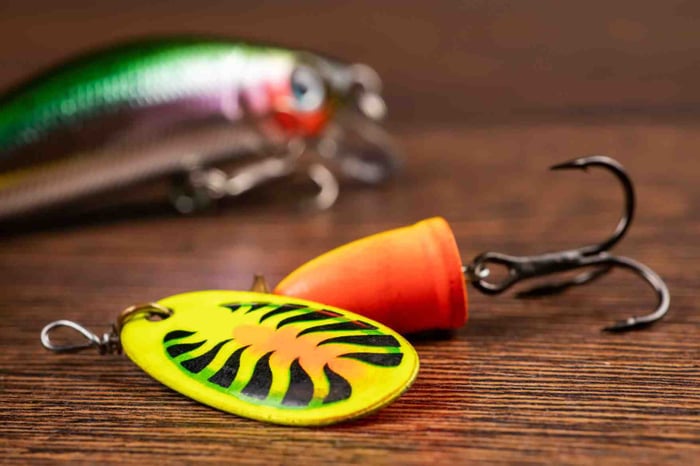
• Weather
Timing is everything with a spinner. Fish respond best when something changes.
Wind disrupts the surface and causes bait to move. That is when to cast over shallow flats or along drop-offs.
The flash of a willow leaf blade gets through clear water, whereas a Colorado thump gets there in dirty water.
• Season
Seasons also influence how bass bite. During pre-spawn, spinnerbaits hook fish holding near shallow water.
A heavy rig creeps slowly across brush piles or rocks and gets pounded.
During the summer, bass tend to dwindle to deeper water.
That is when most anglers choose a heavier weight and keep the rod tip low to work the bait throughout the lower water column.
Fall is ideal for burning blades quickly in open water.
Shad drive shallow, and bass feed aggressively before cold water impinges.
Even in the winter, a slow roll with a large blade will still place bites on the boat.
• Temperature
Temperature has a lot to do with it. More than you know.
Cold water requires a slow method. Allow the bait to sink and drag it slowly.
Warm water allows you to go faster.
Reel quick, make the blades spin, and induce reaction bites.
Clear water requires natural colors and small blades. Dirty water usually requires a bright color skirt and a large gold blade so fish can locate it. Otherwise, it may just never work!
Extra Note:
Casting along grass lines with a lighter spinnerbait can attract fish holding in cover.
Also, bumping the lure against brush piles or dock pilings often causes bass to strike due to instinct.
Across rocks, a slow retrieve keeps the bait moving steadily just off the bottom.
It's just simple, really.
Each situation is about placing the right method and the right size lure in front of a "moving" fish.
How to Fish With A Spinnerbait
Mastering the spinnerbait involves casting, retrieving, and making adjustments.
A solid cast places the lure in the habitat of the bass. Try it out. Play with the angles.
Cast beyond your target and allow the lure to cross through brush piles, grass, or shallow flats.
In open water, make extended casts so the bait has time to drop into the strike zone.
Hold the rod tip constant. And then, just allow the blades to do their job!
Steady retrieve
Retrieval is where the most strikes occur. The steady retrieve is the foundation.
Cast, allow the bait to sink, then reel at a speed that makes the blades spin constantly. This straightforward method is effective in catching fish in both clear and murky water.
Slow rolling near the bottom
To get to deeper water, utilize a heavier head and slow roll close to the bottom.
The steady thud of a large silver blade or gold blade can attract larger fish when nothing else attracts them.
Burning near the surface
Surface burning is another strategy. Cast long and reel quickly so the blades rotate just beneath the surface.
It is honestly so great for bass fishing bait in shallow water or schooled up in open water.
It is also a popular technique many anglers use to search a lot of water rapidly and induce strikes from kinda "feisty" fish.
Stop-and-go retrieve
Stop-and-go retrieve puts life into the bait. Crank, stop, and crank again. It sounds simple, right? Well, a little. It just takes a little bit of practice.
The bait drops when stopped and comes back up when you crank.
That reversal of direction resembles a wounded baitfish and causes fish to hit hard.
Gear Setup for Spinnerbaits
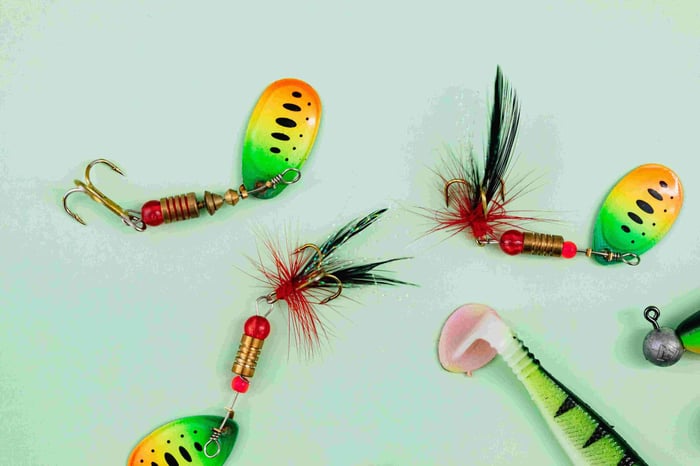
The proper equipment does make a difference when mastering the use of a spinnerbait.
The Rod You Should Pick
Let's begin with the rod. Most anglers choose a medium-heavy rod with a fast action.
It provides a backbone for larger fish but not so stiff that it doesn't have enough bend in the tip to hold them hooked when they leap.
Too stiff a rod will pull the hook from a bass's mouth.
A rod that is too soft won't set the hook quickly enough.
Some Reel Types To Consider
Reel selection is up to style. A baitcaster provides more control on the cast and allows you to cover water fast.
It's great when working brush piles, grass, or shallow flats.
A spinning reel is better for lighter setups or when casting from shore.
They can both work if used with the proper line and proper presentation.
Take A Look At Your Line choices
Fishing line is also a crucial component of the setup. Fluorocarbon is tough, sinks, and maintains the lure in the water column.
Monofilament floats higher and has THAT give.
A lot of anglers prefer it in shallow water since it maintains the bait higher, closer to the surface.
Braid doesn't have any stretch and slices through grass, but requires a soft rod to prevent pulling hooks.
Spinnerbait weight holds it all together.
Lighter weights remain closer to the surface and are fine for shallow water.
Heavier weights sink quickly and assist in deeper water or heavy current.
The size you use depends on how deep you would like to fish and how quickly you'd like the blades to rotate.
Sizing the blade and head weight to your rod and reel balances out the entire rig.
The quality setup allows you to cast long distances, feel all bites, and hook quickly when a large bass bites.
The Right Spinnerbait For You Is...?
Selecting the proper spinnerbait is honestly all about just adapting to the water.
✓ Blade is one of the first decisions.
A willow leaf blade tight spins and cuts well in clear water.
A Colorado blade produces a wide thump that summons fish in dirty water.
An Indiana blade fits somewhere in the middle and is a good pick in transitional conditions.
The size of the blade also makes a difference. Larger blades displace more water and assist in initiating strikes from large bass or pike. Small blades are preferable when the bait traveling in the lake is small.
✓ Skirt color also plays a role.
In open water, natural colors are used to deceive cautious bass.
White or silver-colored skirts imitate shad.
In dirty water, a light color such as chartreuse is visible and assists in the fish locating the lure.
Dark-colored skirts function well in areas where the water is stained or under low light.
A box of several colors is carried by many anglers and changed up according to the bite.
✓ Weight is also something to consider.
Shallow water or grass requires lighter rigs.
Heavy ones allow the spinnerbait to sink into deeper water or stay suspended in the current.
The correct size keeps the lure in the strike zone longer and increases the effectiveness of the retrieve.
✓ Single and double-blade rigs both find their use.
A single silver blade is discreet and excellent in clear water.
A double-blade rig produces more flash and vibration, which is preferable in stained water or big water. Blending a silver blade with a gold blade will mimic the flash of schools of baitfish.
✓ Local water is a factor, also.
A formula that works on shallow flats in one lake won't work in rocky rivers.
Sometimes, it just really takes a little bit of trial and error to find out what works for you!
Pro Tips for Spinnerbait
After mastering the fundamentals, spinnerbaits unlock all sorts of sophisticated tricks.
Slow rolling is one.
In cold water, allow the lure to drop deeper and wind slowly.
Keep the blades barely moving, and the constant thump can induce bites when fish won't chase.
This method tends to catch large fish cruising near rocks or deep brush piles.
Night fishing with big Colorado blades
Spinnerbait night fishing is yet another lethal technique. T
he large Colorado blade casts off vibration that a fish will sense even when it can't see.
Fishermen cast on shorelines, docks, or shallow flats at night.
The noise and pulse of the blades cause bass to feed beneath.
Fishing deep structure and ledges also requires a spinnerbait.
Use a heavy jig head to ensure the lure falls quickly.
Take it down the drop in contact with the column of water.
This is how many anglers fish during summer when bass leave shallow water and bunch up deep.
The rod tip needs to be low and be careful because the speed needs to be slow here.
Double-blade rigs provide additional flash.
Combining willow leaf and Colorado blades will appear as several baitfish.
This presentation is effective in open water when fish are following schools.
Vary blade sizes to resemble the moving bait in the water.
Larger blades may summon larger fish, and smaller blades imitate immature shad or minnows.
Adding trailers alters the action.
A swimbait tail makes the spinnerbait appear more voluminous and attracts strikes from large bass. Adding a grub adds more spin and vibration.
A trailer hook is a typical setup when fish are short striking.
It rests at the back of the skirt and helps hook it quickly.
This is especially helpful when a bass swipes without "biting" the entire lure.
Anglers also adjust blades and skirts for nuances.
Replacing a silver blade with a gold blade makes a difference in light conditions.
Trimming the skirt causes the lure to drop faster.
Changing to a glow color skirt gets bites when the water is dirty.
These minor adjustments may appear simple. But honestly, they can convert slow trips into very productive adventures. If you know what I mean.
Beware of These Rookie Mistakes
Most anglers learn to fish with a spinnerbait the hard way.
ㄨ The very common mistake is fishing too quickly in cold water.
Bass and pike move more slowly when the water is cold. A spinner bait traveling fast across the water column will not receive many bites. Slow is the correct method in cold water. Always remember that.
ㄨ Another error is neglecting water color and clarity.
In clear water, too bright a color skirt or too hard a flashing blade can scare fish away.
In dirty water, a small blade of silver may not displace enough water to make fish strike.
'The correct line, the correct color, and the correct size of blade must be used in accordance with the conditions.
ㄨ Improper rods or lines cost fish, too.
A stiff rod will not hold fish down. A soft rod will not set the hook fast. The incorrect line will cause the lure to sink or ride in ways that remove it from the strike zone.
ㄨ Blade vibration and flash are also ignored by some anglers.
Non-rotating blades will not attract fish out of cover.
A dull blade or an improper rig will prevent bass from biting.
ㄨ The fourth error is not covering sufficient water.
A spinnerbait is made to cover water fast. Anglers who are just casting to one brush pile or one grass bank are robbing the fish.
The lure glows when it is moving, casting, and hunting. To catch bass and larger fish, you must move, cast far, and have faith in the lure.
What Do Other Angles Do?
Spinnerbait anglers have picked up tricks you don't always see in introductory guides.
And no one really tries to simplify it to you. That's such a shame, I know.
But here's what I found browsing through online posts and blogs.
Greg Hackney, for instance, says that matching the color of the skirt to the inshore forage is essential.
When baitfish are predominantly shad, he uses white or natural colors.
But when there are bluegills or perch, he blends colors. This is a very interesting tip, actually.
Hackney also mentions something a lot of anglers don't use enough. Multi-blade spinnerbaits in clear water. They provide THAT extra flash and vibration.
Although they may spook fish if improperly used, in clearer water, those additional blades will more often produce strikes.
I also read from Reddit that if the water temperatures are from 50 to 70°F (cool to mild), trigger reaction strikes using techniques.
That involves bumping cover, deflection, or pause-reeling.
A straight retrieve can hook fish. However, honestly, these minor variations result in more hooksets.
Some anglers prefer a pearl/white spinnerbait with double willow leaf blades and a white trailer.
They cast from creeks outward, not just deep in backwaters with a lot of baitfish.
Why? Because when bait accumulates too much, bass have fewer reasons to leave cover. Some really just prefer ambush areas where bass anticipate bait moving by.
But some fishing books I read offer more straightforward advice. When water is muddy or the wind stirs up the surface, use a spinnerbait with some weight + a bigger blade.
The vibration and flash penetrate poor visibility.
When all's clean and peaceful, lose weight, employ a smaller blade, and employ natural colors so as not to spook fish.
These real-world tips show a pattern. That is, even pros and weekend anglers both adjust constantly. So, don't be afraid to try out different techniques at your own pace, too!
